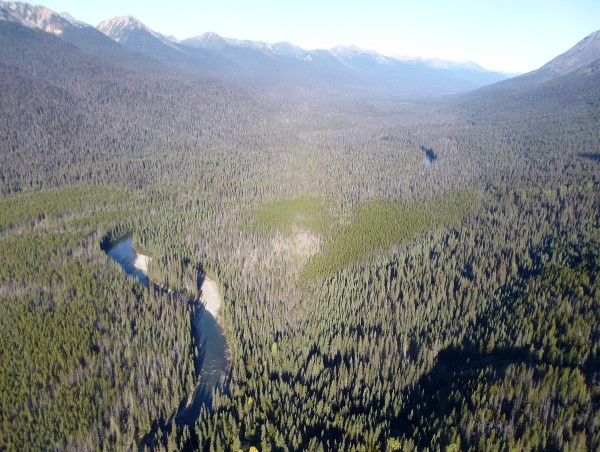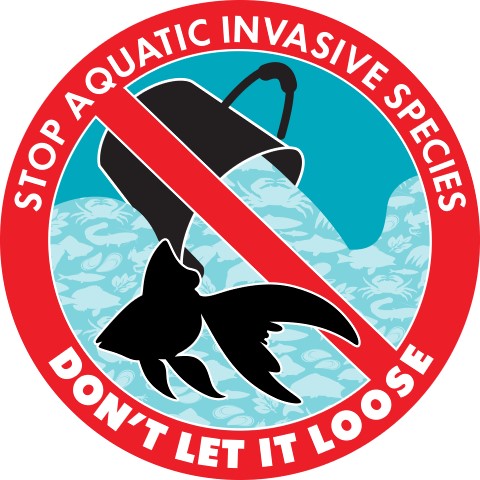Omineca freshwater fish management
The Omineca Region covers the north central interior section of British Columbia, an area of approximately 130,000km2. From the Interior Plateau to the remote wilderness majesty of the central Rocky Mountains, there are numerous lakes and trails. Regional Fisheries and Wildlife staff are based in the Regional Office in Prince George.
On this page
- Omineca Priority species
- Scientific Fish Collection Permit information
- Aquatic Invasive Species (AIS)
- Recent Omineca Fisheries Program primary projects
The topography of the Omineca Region encompasses mountain ranges, plateaus, and creates numerous lakes and rivers within three major drainage basins (Arctic, Fraser, and Columbia basins). Major watersheds of the region include the Williston Reservoir and its tributaries, the Nechako and Stuart-Takla systems, and portions of the Upper Fraser River and its tributaries. In addition, several thousand smaller lakes and streams are part of the natural resource rich landscape. These rivers and lakes offer excellent fishing opportunities and the varied landscape hosts a tremendous diversity of species: Burbot, Arctic Grayling, Rainbow trout, Bull Trout, Lake Trout and more. Major stressors to aquatic ecosystems include Climate Change, fishing pressure, industrial development, forestry, and other land use changes. The region benefits from a high diversity of Indigenous communities that contribute to all aspects of the region's culture and economy.
Regional Fish and Wildlife staff are based in Prince George and tasked with managing fish conservation, First Nations fisheries, and recreational fisheries. The Omineca Fisheries team works towards continuously improving the delivery of the Omineca Fisheries Program by implementing scientific monitoring and research projects that support operational priorities, in partnership with all user groups, and by making
Omineca Priority species:
White Sturgeon (Species at Risk):
White sturgeon in the Nechako and Upper Fraser watersheds have been listed as endangered under the Species at Risk Act (SARA). It is therefore illegal to fish for, kill, harm, or harass white sturgeon in the Omineca Region. Recovery actions have been underway since 2006 via the Nechako White Sturgeon Recovery Initiative.
Bull Trout (Species of Special Concern):
Bull trout were added to the Conservation Data Center’s “Blue List of Species of Special Concern” in 1994. Bull trout management planning process began around 2010, when COSEWIC identified need for a conservation status update for bull trout nationally. Bull Trout monitoring in the Omineca Region includes the Nechako-Upper Fraser River and populations in the tributaries to the Williston Reservoir. You can find more information about Bull trout on Environment Canada's Species at Risk Registry
Scientific Fish Collection Permit information
- Scientific Fish Collection Permit: Application Procedures (BC Natural Resource Online Services) or call 1-877-855-3222 (FrontCounter BC) for assistance.
- Scientific Fish Collection Permit: Notification Form – Region 7A
Aquatic Invasive Species (AIS):
Aquatic Invasive Species issues are generally low in the region, however, require close attention and high effort to minimize their environmental impact. A recent example is the presence of Rosy Red Minnows in a small stream east of Prince George.
Recent Omineca Fisheries Program primary projects:
Projects listed below are ongoing or completed; Ongoing project titles can be found via the respective funding agencies’ sites, e.g., Fish and Wildlife Compensation Program, Freshwater Fisheries Society of BC, and the Habitat Conservation Trust Foundation; completed project reports are listed below or can be searched for on EcoCat.
Rivers
- Multi-partner Nechako White Sturgeon Recovery initiative (see: https://www.nechakowhitesturgeon.org/)
- Upper Fraser and Williston Bull Trout Redd Surveys for conservation implications of meta populations.
- Stellako, Anzac and Table Rivers - fish abundance estimates via snorkel surveys
Lakes
- Gill Net Assessments to determine Lake Trout population density estimates (bi-annual, 1-2 priority lakes)
- Small Lake Stock Assessments to ass performance of lakes (annual, 8-10 lakes)
- trail Camera projects t determine year-round angler effort, success, and satisfaction in stocked lakes
Recent Omineca Fisheries reports
- 2019-20 Nechako White Sturgeon Recovery Initiative Annual Report (PDF 1.9 MB) (Completed 2020)
- Critical Spawning Habitats and Abundance of Bull Trout in the Williston Reservoir Watershed (PDF 3.7 MB) (completed 2019)
- Trend in Abundance of Arctic Grayling (Thyllamus arcticus) in Index Sites of the Parsnip River Watershed, 1995-2018 (PDF 1.5 MB) (completed 2019)
- 2015-2018 Omineca Small Lakes Stock Assessment Report (pending completion)
Useful Fisheries and Aquatics data


